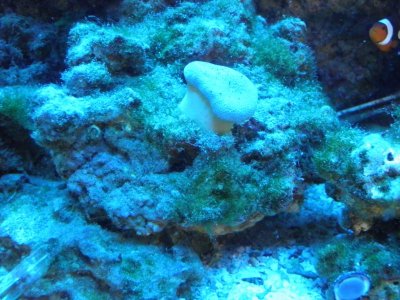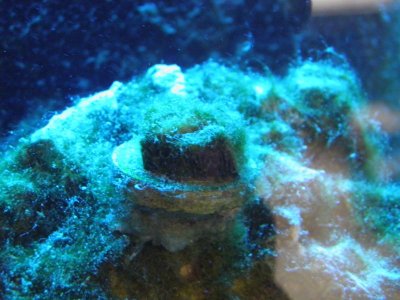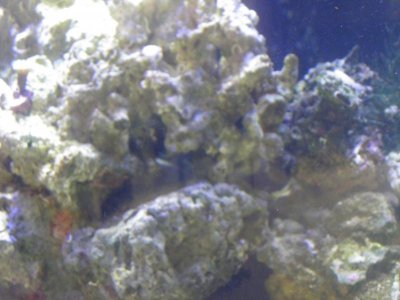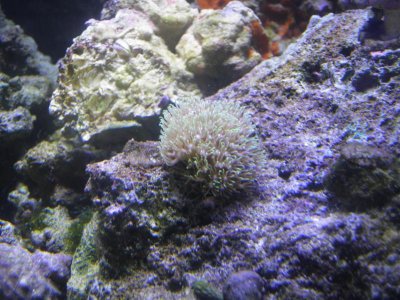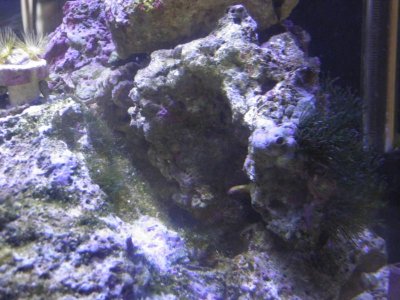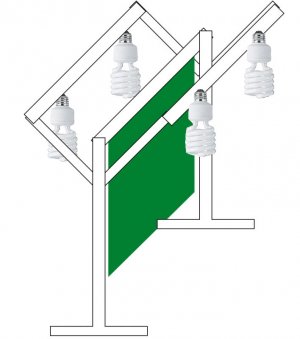The weight of evidence at this point seems to be against the use
of algal scrubbing in reef tanks, and the method should be
considered to be highly experimental. Beginners particularly are
advised to avoid this technique until they have considerably more
experience with reefkeeping. The advanced aquarist may well wish
to experiment with this interesting and controversial method, but
it would be unwise to risk the lives of an entire reef tank full
of coral.
As compelling as some find the above arguments in theory, there
seem to be serious problems with algal scrubbing in practice.
Many attempts by public aquaria at implementing reef tanks using
only algal scrubbing have been failures. In particular, it seems
difficult to find successful long term success with Scleractinia
(stony corals) in such tanks, and those success stories which can
be found are quite difficult to verify and often contradicted by
others.
Various public and private aquaria have used algae scrubber filters on their reef aquaria, with disastrous results. The microcosm at the Smithsonain Institution has yet to keep scleractinia alive for more than a year. While Dr. Adey has stated how well corals grow in this system, those viewing the system have failed to find these corals. In an interview with Jill Johnson, one of the techs responsible for the Smithsonian tank, she stated
to Frank M. Greco that frequent collecting trips were needed to keep the system stocked with live scleractinia.
I haven't had time to read the articles where these statements are references, but what I can say is that unless the information used to come to these conclusions is recent, say less than 2 to 3 years old, then it is pretty much outdated.
There are many problems with the old dump-style algal turf scrubbers that have been improved upon or completely eliminated with the advent of the vertical waterfall style scrubber. Much of that has to do with high-speed laminar flow being able to deliver nutrients more effectively to the algae.
There has also been a large leap forward with respect to the necessary lighting requirements, spectrum, intensity, etc. Keep in mind that 25 years ago, let alone even 10 years ago, Compact Fluorescent lighting was not viable, and T5HO was not even around, and LED was not even a consideration. HPS was about all there was for grow lights.
It has been shown that there are distinct relationships between light intensity and duration, flow rates, feeding techniques, cleaning schedules, etc. These are all relatively new topics and everyone who has been around in the marine hobby long enough falls back on what they've heard in the past regarding the epic failures of stand-alone algae scrubber systems, but completely ignore the fact that there have been fundamental conceptual changes that partially or completely invalidate previous studies.
The simple fact that a change in light intensity, light duration, and flow rate across the screen will change not only the main composition of the algal growth on the screen, but will also change the effective filtration capability of that scrubber, and will also change the DOC content of the system on which that scrubber is installed, has not even been considered in those old studies. The modern design of scrubber has completely re-written the book, and all studies, not all on complete, but definitely all in part, prior to this, are pretty much irrelevant.
This thread was started to show people how to build, maintain, and troubleshoot their own algae scrubber. I myself have been confused a could of times and told people it's on the DIY forum instead of the advanced, simple mistake.
So we've gone through our little back and forth about this topic again, and again, we're exactly where we left off. I hope that my post here makes some sense however. One of the things that I had hoped to do during MACNA this year was talk to as many of the speakers and members that showed up, but being part of the club that helped put the show on, I hardly got time to stop by each booth, and I was there all 3 days plus setup!
There really needs to be some well designed studies by some colleges or universities or something. They'll all fall back on prior studies that say the things Barfly posted above, and will see no reason anything will be different because they don't understand the advances.
There have been major advances Barfly, I hope that you can see at least that. I believe that in the past, there was no case for stand-alone filtration for algae scrubbing, just like you posted, that was very valid information at the time. But things have changed, and plenty of people are running stand alone Algae Scrubber filtration on all types of systems, and I personally have only heard of one or two instances of people having serious problems, and that's out of thousands of DIYers out there, probably half of them doing something wrong but still not having problems.
So that's all I have for now, haven't caught up with the rest of the thread yet even. It's good to talk about these things every once in a while and I can see things getting heated by these discussions but I think that people need to step back and think about their responses instead of firing back so quickly. You need to understand where people are coming from. This goes for both sides...









